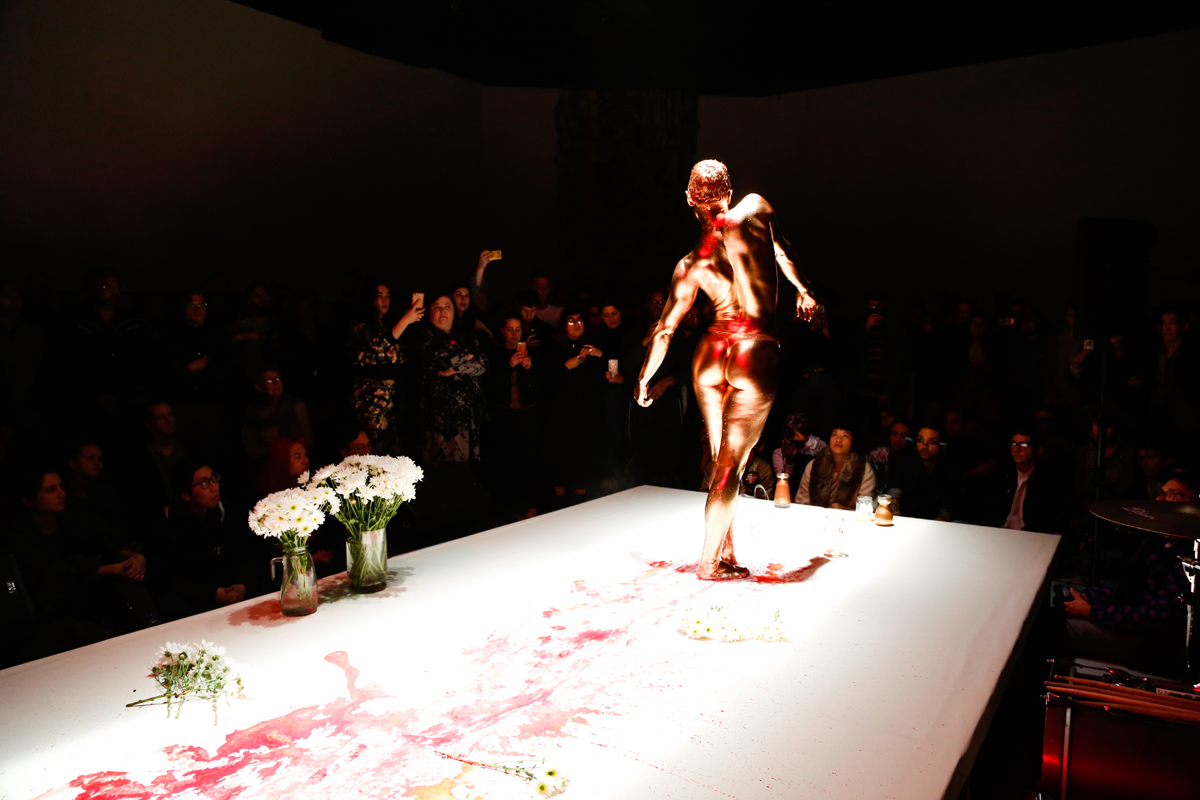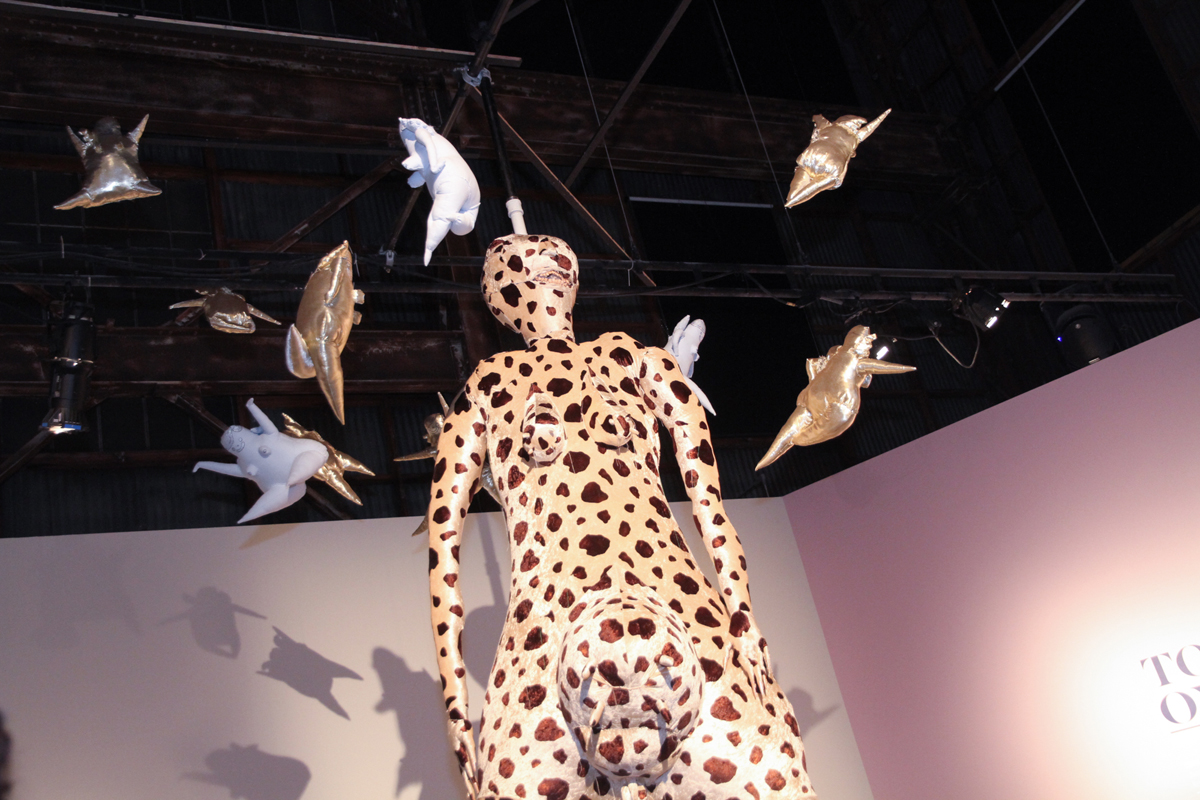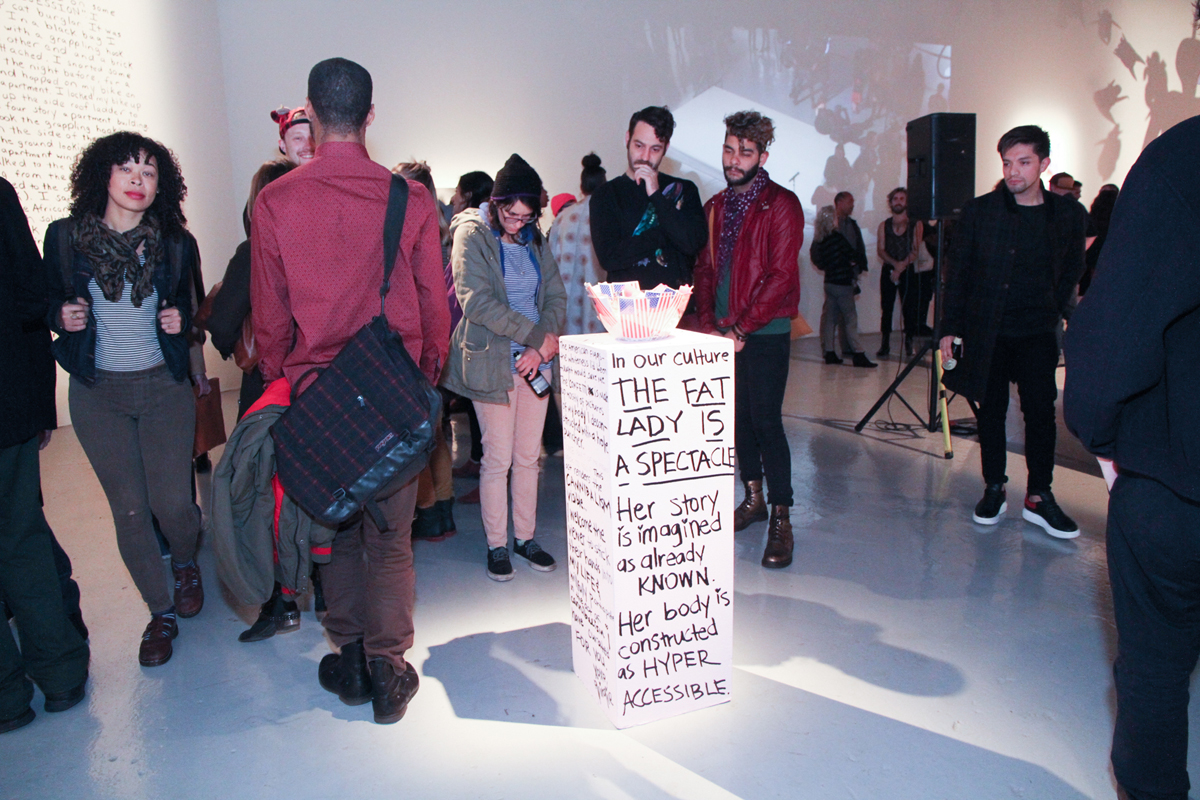Painted completely in gold, boychild’s body shimmered iridescently and transformed as the glowing red light illuminated muscular indentations at different angles. The international performance artist cradled a bright, pulsating light in her mouth and slowly jerked across the stage as if her body was a tool being used for the first time. From a vase, she slowly poured a thick, chocolately substance down her bare chest, letting it drip to the ground and squish between her toes. With that, boychild’s body became an object — and she, an artist trapped inside an utterly sensual sculpture made of flesh.
This Dec. 1 performance marked the opening night of Touch On: Aesthetics in the Art, Politics and Ontology of Touch, a group show at San Francisco’s SOMArts Cultural Center co-curated by Kelly Lovemonster and James Fleming. Their intention is to incite a reconsideration of touch, reshaping our understanding of the word to allow for a multifaceted definition. As such, the works in the show touch on (see, it’s already working) ways that we can be touched not only physically, but emotionally, aurally, visually and even energetically. And, as Fleming put it, they end up asking: “What does it mean to be in a body?”

Lovemonster and Fleming, who both identify as queer, arrived at the topic of touch and ontology while enjoying happy hour at The Mix in the Castro district. As Fleming recalls, they asked themselves what it would look like to “create a curatorial project that is fundamentally through the lens of queer artistry.” The conversation continuously returned to definitions of the body — how specific bodies should look and be used — and the question of how to reclaim those definitions from the heteronormative gaze.
“We had to start from the beginning,” says Fleming. “How do we engage with the world? We have to redefine that.”
As you enter the show at SOMArts, the most striking piece is Craig Calderwood’s towering soft sculpture Beast of Burden, which hangs from the gallery’s high ceilings. The plush figure, made of a velvety cow-print fabric, has the structure of a human body with the addition of a sagging utter and snout. Calderwood said she created the hybrid species to draw connections between the ways that society sees both cows and women: with a sense of unauthorized ownership. But by bringing the sculpture into a space where audiences aren’t allowed to touch it, Calderwood is able to “create a safe space for this thing that has no access to consent,” she says.

For Universal Exchange, across the gallery, Oakland artist Yetunde Olagbaju asked friends to record themselves reciting affirmations, then created an audio compilation. For Olagbaju, phrases such as “I see you,” and “I hear you,” translate into a physical form of caring.




